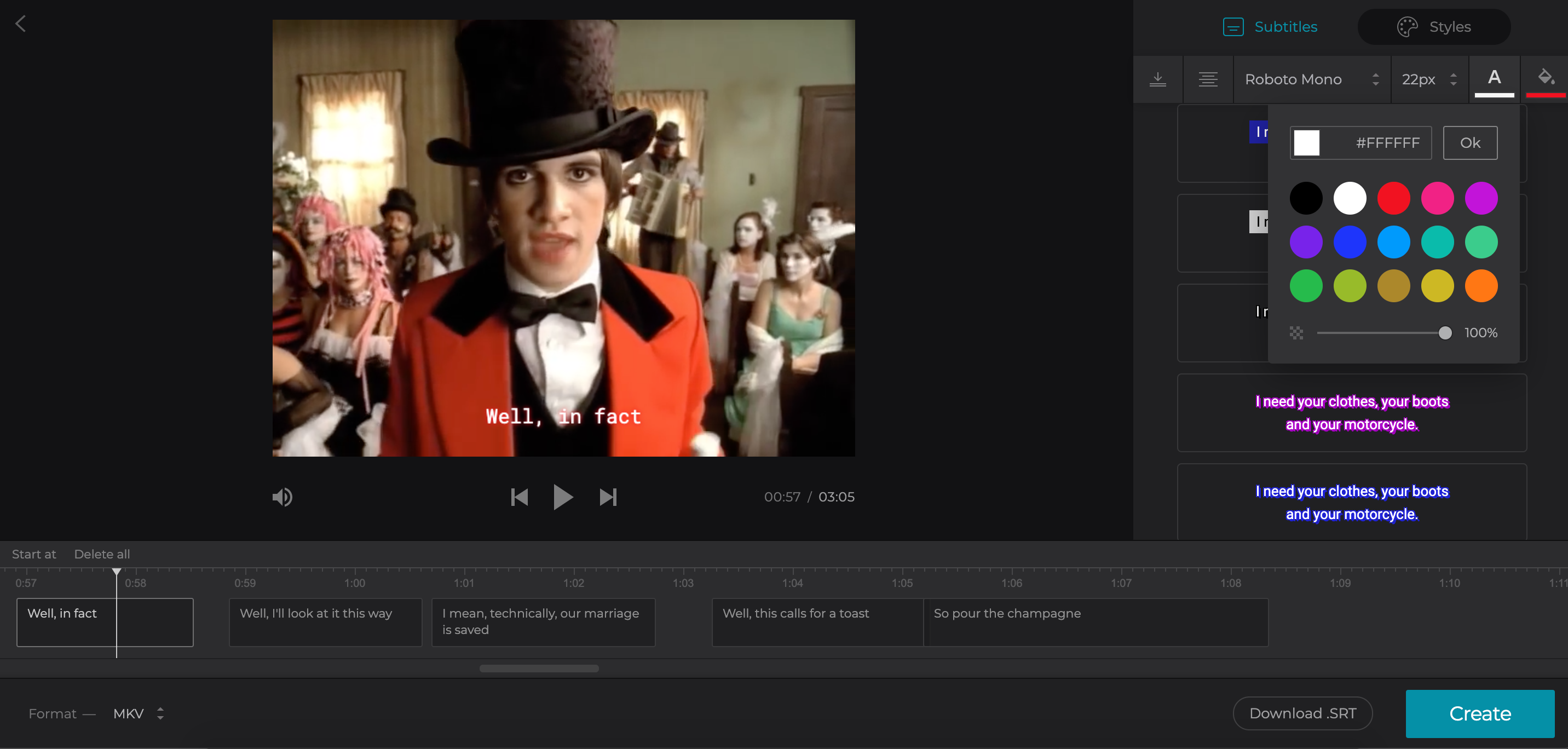

I could not find a single thread about that. That's precisely why I started this thread about DISABLING NOT REMOVING subtiles. There are literally thousands of threads about removal by remuxing. It IS NOT about REMOVING subtitles by REMUXING with mkvmerge or any other tool. Originally published: 15th Jan 2011.THIS QUESTION IS ABOUT DISABLING-NOT REMOVING SUBTITLE TRACKS FROM MKV FILES FROM THE COMMAND LINE. And if this does work for you or you did something cooler with this - I would love to hear from you. Mkvextract.exe tracks "c:\My_MKV_Video_File.mkv" 1:Audio_track.MP3 3:My_MKV_Video_File.srtįor more possibilities, look through the documentation of the mkvextract tool.

We can also combine all of what we did above to extract both audio and subtitles in one single line: Mkvextract.exe tracks "c:\My_MKV_Video_File.mkv" 1:Audio_track.mp3Īgain, note that we prefixed the MP3 filename with the right track number. So for instance, if the first track is audio, you can extract it with very little modification to the command we used before All you need to do is use the right track number as prefix. The mkvextract tool is just as capable of extracting other tracks - audio, video or non-text subtitles. This is “Track Number” we noted in the previous step. Mkvextract.exe tracks "c:\My_MKV_Video_File.mkv" 3:My_MKV_Video_File.srt In the case of my example, this will look like the following:

We will now use the mkvextract tool from the MKVToolnix kit. But additional post-extractions steps will be necessary to convert the specific format into the text-based. If your codec is any different, the following steps can be used to extract such subtitles into it's own file. The "Codec" field of the same track tells you if the subtitles you are going to extract are Text. This will come in handy with the extraction process. Important: Make a note of the “Track Number” for our subtitle track. You should see the same information as we saw before here too (see screenshot). If you are, start up mkvinfo in graphical mode with the following command line: An example can be seen in the screenshot on the right.Īnother way of doing this is to use the mkvinfo tool from the MKVToolnix collection mentioned above. Expand all the items underneath until you find one with the type “Subtitle”. Select Tools > Media Info (or press Ctrl+J). The easiest way is to check is to open the file using VLC Player.


 0 kommentar(er)
0 kommentar(er)
